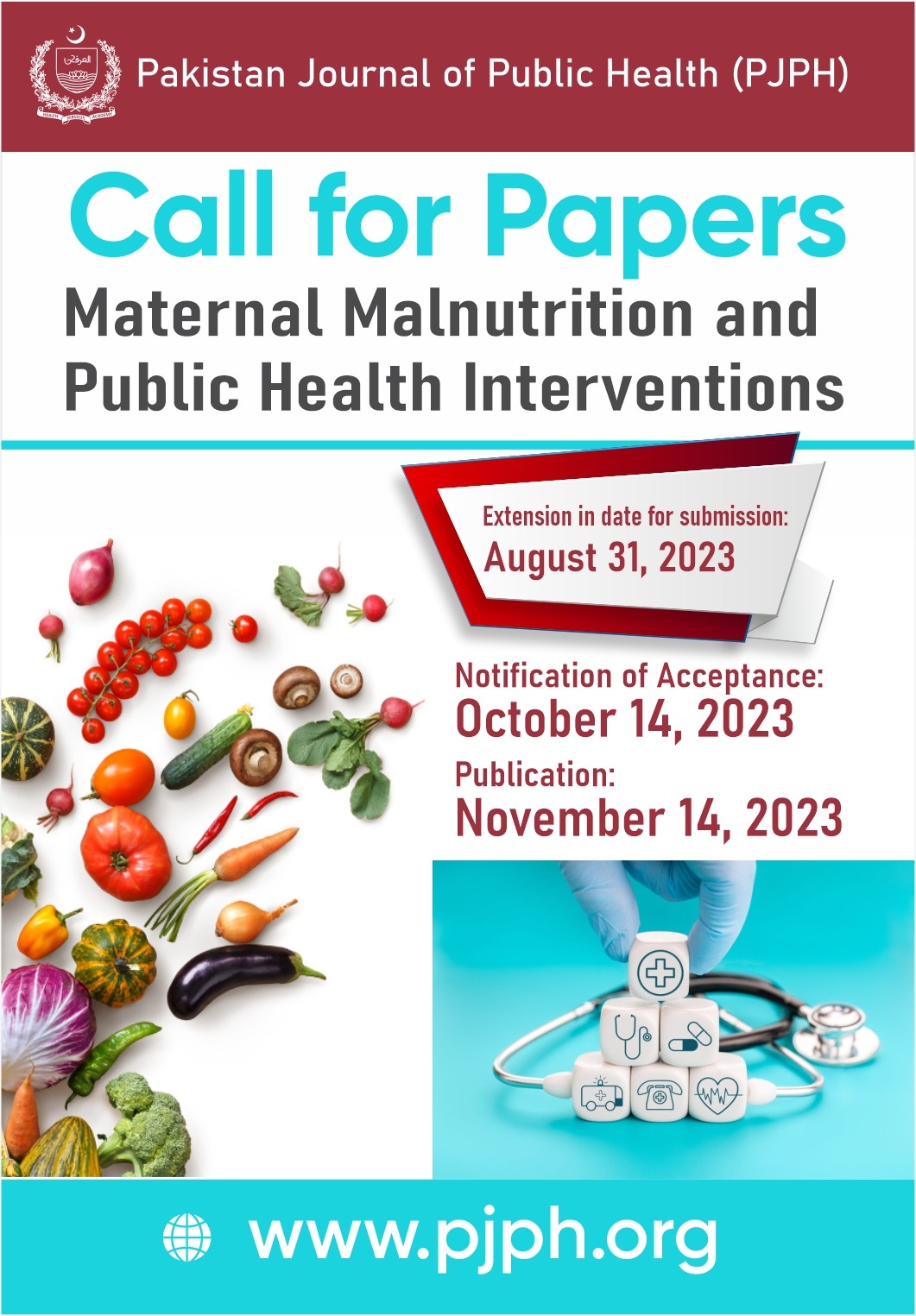A Cross Sectional Study to Evaluate Awareness About Hepatitis A & E Among Students in Lahore
DOI:
https://doi.org/10.32413/pjph.v10i3.507Keywords:
Hepatitis A, Hepatitis E, Knowledge, awareness, practicesAbstract
Background: The aim and objectives of the study were to determine the knowledge, attitude and practices among biological and non-biological students regarding Hepatitis A virus (HAV) and Hepatitis E virus (HEV).
Methods: The present study was conducted by the Department of Microbiology, Pakistan kidney & liver institute and research center (PKLI & RC) at University of Veterinary and Animal Sciences (UVAS), Lahore, Pakistan. The study was conducted in November, 2019 to January, 2020. A total of 326 respondents (students) participated in the present study. Respondents filled a pre-tested structured questionnaire. The variables accessed were knowledge of the diseases including etiology, mode of transmission, and prevention and control measures.
Results: Most 81.56% of respondents from biological sciences (B-S) group and 51.70% from non-biological sciences (N-B-S) had awareness about HAV/HEV. Furthermore, 72.06% of respondents from BS group and 13.60% of respondents from NBS group had knowledge about the mode of transmission and spread of HAV and HEV infection. Only 16.20% of students from B-S group were aware about importance of vaccination against HAV/HEV. While a very low prevalence was found about vaccination in N-B-S group that is only 4.76%.
Conclusion: The study shows significance difference in the awareness level among students from biological sciences and non-biological sciences background. Respondents were found to misunderstand the hepatitis A & E infections with hepatitis B & C, which suggests that there is need to spread awareness about the differences in their spread and severity of these infections. Awareness campaigns should be conducted to make people aware of the ways HAV/HEV spreads, its mode of transmission, severity of infection and preventive measures to minimize its spread as well as chances to acquire HAV/HEV infections.
Downloads
Published
Issue
Section
License
Copyright (c) 2021 Pakistan Journal of Public Health

This work is licensed under a Creative Commons Attribution-NonCommercial 4.0 International License.






